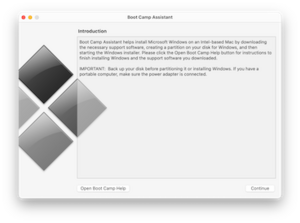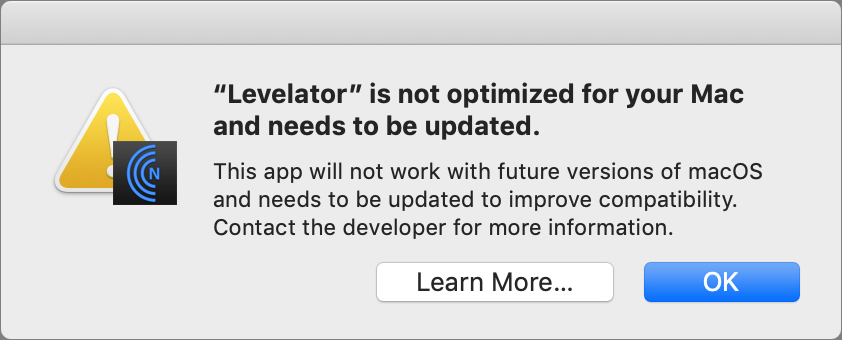- Time Machine did its first backup of 215GB Ok and seemed to continue to just copy the modified files thereafter, just a few KB. But, then I realised that if Parallels is open, the backup will contain the whole of the Virtual machine, and it copies 194GB every time, every 3 hours, so my HDD is full in one day.
- Is a developer of desktop and server virtualization software. Released on June 15, 2006, it was the first software product to bring mainstream virtualization to Macintosh computers utilizing the Apple–Intel architecture (earlier software products ran PC software in an emulated environment). Its name initially was 'Parallels Workstation for Mac OS X', which.
If you made a Time Machine backup of your Mac, Migration Assistant can use that backup to restore your personal files, including apps and everything in your user account.
If you prefer to restore just a few files or earlier versions of those files, learn how to use Time Machine to restore specific files.
Time Machine did its first backup of 215GB Ok and seemed to continue to just copy the modified files thereafter, just a few KB. But, then I realised that if Parallels is open, the backup will contain the whole of the Virtual machine, and it copies 194GB every time, every 3 hours, so my HDD is full in one day. Doing this means you can’t restore your complete installation from Time Machine. If your hard drive fails, you’ll have to re-install the OS. If you’re willing to put up with that, excluding your system files is another way to save a pretty good amount of space on your backup drive.
Use Migration Assistant

- If you need to reinstall macOS, do that before continuing. For example, if your Mac starts up to a flashing question mark, you need to first reinstall macOS.
- Make sure that your Time Machine backup disk is connected to your Mac and turned on.
- Open Migration Assistant on your Mac. It's in the Utilities folder of your Applications folder.
If your Mac starts up to a setup assistant, which asks for details like your country and network, continue to the next step, because the setup assistant includes a migration assistant. - When asked how you want to transfer your information, select the option to transfer from a Mac, Time Machine backup, or startup disk. Then click Continue.
- Select your Time Machine backup, then click Continue.
- Choose a backup and click Continue.
- Select the information to transfer.
In this example, John Appleseed is a macOS user account. If it has the same name as an account already on your Mac, you're prompted to either rename the old account or replace the one on your Mac. If you rename, the old account will appear as a separate user on your Mac, with a separate home folder and login. If you replace, the old account will delete and then replace the account on your Mac, including everything in its home folder. - Click Continue to start the transfer. Large transfers might need several hours to complete.
If you need help, please contact Apple Support.
Learn more
Time Machine in macOS can work within a number of apps, letting you retrieve older versions of files or even deleted email messages in the Mail app. However, if an entire folder of stuff goes away, you need to turn to the Finder.
Time Machine Restore Previous Version Of Parallels Full

Macworld reader Harold found himself in this pinch, because a folder that contains all his business emails disappeared from Mail without any action on his part that he’s aware of. He first tried to use Time Machine within Mail, opening Mail, then choosing Enter Time Machine from the Time Machine system menu item. Every time he did so, Mail quit!
If you’re using IMAP, a protocol for syncing messages with a remote server to a local app’s mailbox, it’s possible to recover it that way, assuming the deletion didn’t propagate to the server, too. You should be able to select in Mail: Mailbox > Synchronize > Mail account name, and this will restore access to the messages.
Failing that, however, Time Machine can still do the trick, because it’s backing up the mailbox files that Mail uses to store messages locally.

1. In the Finder, choose Enter Time Machine from the Time Machine system menu item.
2. Go to your Home directory, then open the Library folder, then the Mail folder inside that.
3. You may see multiple folders at the next level. Look for the one starting with V that has the most recent modification date and open it.
4. You’ll see several folder with long hexadecimal (base 16) names. One of these is the folder that corresponds to the mail account that has the mailbox you need in it. Open each in turn until you find the right one.

5. Restore the file with the name of the missing mailbox, like Small House Design.mbox to the Desktop or somewhere, not to the original location.
6. Exit Time Machine.
7. Switch to Mail, and then choose File > Import Mailboxes.
8. Choose Apple Mail, and click Continue. (Even though the folders end with mbox, they’re not using the standard Unix mbox format, which can be used to import mail folders from other platforms.)
9. Select the mbox file in at this stage and click Choose.
10. All the messages under Items To Import will be selected by default, and that’s likely what you want to keep in place.
11. Click Continue.
12. You’ll see a dialog that the messages are in a folder and it tells you the name, which is typical “Import” unless that folder already exists.
13. Look in the Mailboxes view at left under On My Mac, and the Import folder should be at the bottom. Select it.
14. All your messages will appear in the summary column if imported correctly. (If you click open the folders under the mailbox name, you’ll see a whole hierarchy you can ignore.)
15. Re-create the mailbox that was deleted.
16. From the Import mailbox, select all the messages and drag them into the mailbox you want them back in. If that mailbox is hosted on an IMAP server, Mail will upload them there.
Ask Mac 911
We’ve compiled a list of the questions we get asked most frequently along with answers and links to columns: read our super FAQ to see if your question is covered. If not, we’re always looking for new problems to solve! Email yours to mac911@macworld.com including screen captures as appropriate, and whether you want your full name used. Every question won’t be answered, we don’t reply to email, and we cannot provide direct troubleshooting advice.
Note: When you purchase something after clicking links in our articles, we may earn a small commission. Read ouraffiliate link policyfor more details.
- Related: